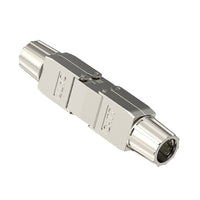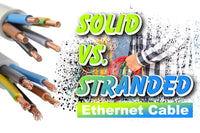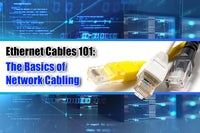Network cabling or low-voltage wiring has been very popular in the past years. Many businesses and companies have realized the importance of creating a high-performance data center or server room. A structured cabling system is essential for complicated cabling, especially for data center cabling.
Do you know what structured cabling is? Do you need structured cabling or not? This post will tell you the advantages of structured cabling and give you some advice on choosing the cabling solution.
What is Structured Cabling?
In the past, people often adopted the traditional cabling system, also known as unstructured cabling or point to point cabling. As the name implies, point to point cabling means that you’re connecting the cable from one point to another. Each piece of equipment has its own cable, and this traditional data cabling is suitable for small systems such as small offices or buildings.
But for larger networks, structured cabling is necessary for a faster and more stable speed. Structured cabling is a data center cabling organization method comprising several small yet essential parts. In a structured cabling system, many rack servers, patch panels, and cables are needed to create access to different hardware ports, and these patch panels are also connected to each other for data transmission. ANSI/TIA-568 is a technical standard for commercial building cabling, which also, in turn, enables the development of structured cabling.
6 Components of Structured Cabling System
There are six primary components of the structured cabling system, and they are usually located in different places.

Entrance Facilities
In a structured cabling system, the entrance facilities are the beginning point of company wiring and the last part of ISP wiring. It means that the company should be responsible for its network cabling. The entrance facility often includes a network connection point and other hardware.
Equipment Room
The equipment room is the place that connects the entrance cabling to the internal cabling. The room is placed with server racks and patch panels to provide a network connection for horizontal or riser cabling. You’ll also find routers and network switches here for a structured cabling system. The equipment room plays a vital role in transferring data, and companies should ensure the proper temperature and moisture in the room.
Backbone Cabling
Backbone cabling (riser cabling) helps provide interconnection among the entrance facilities, equipment room, and telecommunication room. It is often installed in the vertical direction, from floor to floor, but it can also be installed between different rooms on the same floor.
Telecommunication Room and Enclosure
The telecommunication room or enclosure can be the termination point of backbone cabling and horizontal cabling. It connects the backbone and horizontal cabling for a cross connection and helps distribute data traffic.
Horizontal Cabling
Horizontal cabling is designed to transfer the data from the telecommunications room (TR) or telecommunications enclosure (TE) to the work area. It can ensure that users can get telecom signals at their workplaces. It often includes the consolidation point, horizontal cables, and outlets. Twisted pair cables and fiber optic cables are often used in horizontal cabling.
Work Area
It is the final place of a structured cabling system where the cabling is connected to the users’ equipment. This part includes the RJ45 connectors, wall outlets, and adapters to connect to users’ equipment, including computers.
Advantages of Structured Cabling
A structured cabling system makes the infrastructure installation easier, which can support a lot of data equipment. It decreases the time of network installation and can easily be relocated to a new place. The structured cabling system also provides high flexibility as you can add new parts and moves.
This cabling system can help support high bandwidth and fast network speed for VoIP applications, camera systems, and other network applications.
The structured cabling system often includes cable management equipment, which can help avoid cable spaghetti. So you can easily find the wrong wiring, which can help reduce power and maintenance costs.
The structured cabling system is a future-proofing choice for many companies.
Cabling Types
Twisted Pair Cables
Pros:
- Cost-effective
- Great for companies who want to install long-distance network
- Easy to install, use, maintain, and upgrade
- Quick installation, suitable for emergency situations
- Low loss
Cons:
- Sensitive to external interference
- Has a high requirement for infrastructure upgrade
- Longer distance affects the performance of network speed
Fiber Optic Cables
Pros:
- Features a strong ability to be insusceptible to EMI and other power interference
- Faster speed and longer distance
- Suitable for both outdoor and indoor applications
- Higher reliability and longer service life
Cons:
- Expensive
- More challenging to install
Do I Need Structured Cabling?
Whether you need structured cabling depends on your own need. And the type of cabling used in the structured cabling system relies on the size and needs of your business.
A small office with a small number of employees is unlikely to use the structured cabling solution unless you want to expand your business quickly.
Well, large enterprises with hundreds of employees can significantly benefit from the flexibility and efficiency of a structured cabling system.
For more information on this topic, you can keep up on our blogs. While VCELINK offers general and basic information for our customers and other visitors to the website, it’s not professional advice.




Be the first one to comment.
Leave a comment